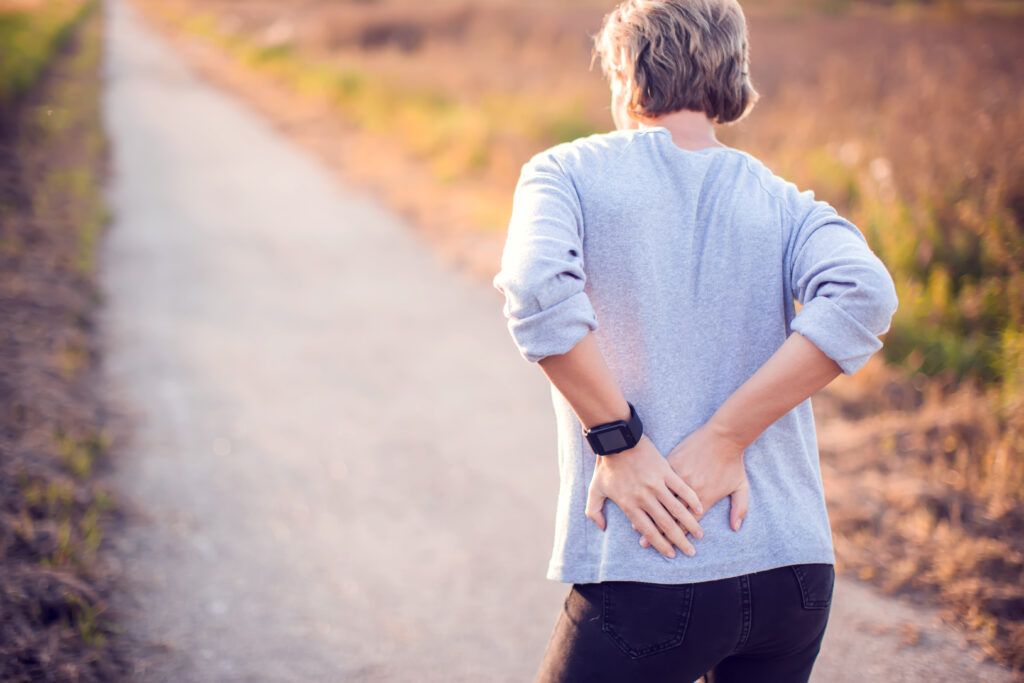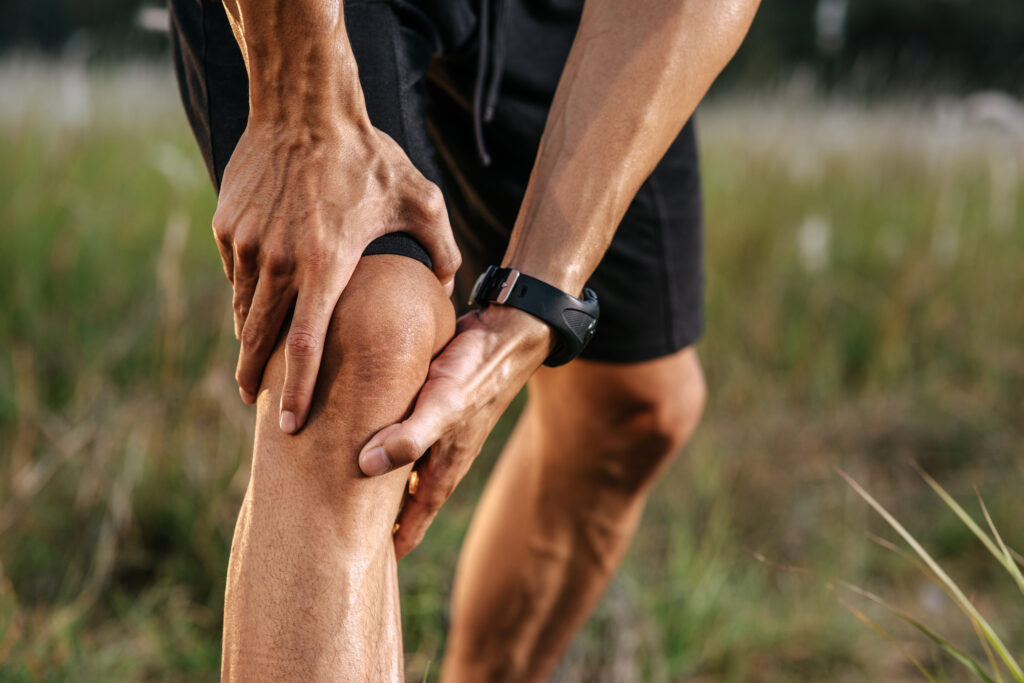If you're grappling with lower back pain, you're not alone, and there are various effective remedies that can help ease your discomfort. From over-the-counter medications to simple lifestyle changes, you can take control of your pain management. You might even find that incorporating specific exercises or alternative therapies could make a significant difference. But before you settle on a solution, consider how these methods complement each other in a holistic approach. What other strategies could you explore to guarantee long-term relief?
Understanding Lower Back Pain
Lower back pain is a common issue that many people experience at some point in their lives. It can stem from various causes, and understanding these can help you target effective relief strategies. Typically, lower back pain results from muscle strains, ligament sprains, or even herniated discs. You might find that repetitive movements, poor posture, or an inactive lifestyle contribute to this discomfort.
Injuries related to sports or heavy lifting can also lead to acute pain, while chronic pain often develops due to underlying issues like arthritis or degenerative disc disease. When you feel that nagging ache, it's crucial to pay attention to your body's signals.
The location and intensity of the pain can vary considerably. You might experience sharp, stabbing sensations or a dull, persistent ache. Sometimes, the pain radiates down your legs, indicating potential nerve involvement. Recognizing the type and pattern of your pain can help you communicate more effectively with healthcare professionals.
It's also important to take into account emotional and psychological factors. Stress, anxiety, and depression can exacerbate your pain, creating a cycle that's tough to break.
Lifestyle Changes for Relief
Finding effective relief from lower back pain often starts with making some lifestyle changes. First, evaluate your daily habits. If you spend long hours sitting, whether at a desk or on the couch, it's time to rethink your setup. Consider using an ergonomic chair or a standing desk to promote better posture and reduce strain on your back.
Next, pay attention to your weight. Carrying excess pounds can considerably increase the pressure on your lower back. A balanced diet combined with regular activity can help you maintain a healthy weight, providing much-needed relief. Incorporating more fruits, vegetables, lean proteins, and whole grains into your meals can make a big difference.
Hydration also plays a key role. Drinking enough water supports spinal health, helping to maintain the elasticity of spinal discs. Aim for at least eight glasses a day to keep your body well-hydrated.
Sleep quality matters too. Invest in a supportive mattress and pillows that align your spine properly. Establishing a consistent sleep schedule can improve your overall rest, allowing your body to recover more effectively.
Lastly, manage your stress levels. High stress can lead to muscle tension, which may exacerbate pain. Techniques such as mindfulness, meditation, or even simple deep-breathing exercises can help you stay relaxed and reduce discomfort.
Targeted Exercises and Stretches
To relieve lower back pain, you should focus on targeted exercises and stretches that strengthen your core muscles.
These movements not only build stability but also enhance flexibility and mobility, which can reduce discomfort.
Strengthening Core Muscles
How can strengthening your core muscles help alleviate lower back pain? A strong core supports your spine, reduces strain on your lower back, and improves your posture. By focusing on targeted exercises, you can build the stability needed to prevent pain and enhance your overall mobility.
Start with planks—hold a plank position for 20 to 30 seconds, gradually increasing the duration as you gain strength. Incorporate bridges by lying on your back, bending your knees, and lifting your hips to create a straight line from your shoulders to your knees. This exercise engages your glutes and lower back.
Don't forget about bird-dogs! From a hands-and-knees position, extend one arm forward and the opposite leg back, keeping your core tight. Alternate sides for balanced strength.
Finally, try side planks, which target your obliques and help stabilize your spine.
Consistency is key. Aim to perform these exercises three to four times a week. As your core becomes stronger, you'll notice a reduction in lower back pain, allowing you to move more freely and confidently in your daily activities.
Flexibility and Mobility Stretches
Incorporating flexibility and mobility stretches into your routine can greatly reduce lower back pain and improve overall function. These targeted exercises help lengthen tight muscles and enhance your range of motion, which can alleviate discomfort.
Start with the cat-cow stretch. Get on your hands and knees, arch your back up like a cat, then dip it down while looking up like a cow. This promotes spinal flexibility.
Next, try the seated forward bend. Sit with your legs extended, reach for your toes, and feel the stretch in your hamstrings and lower back. Hold for 20-30 seconds.
Another effective stretch is the child's pose. Kneel and sit back on your heels, stretching your arms forward and lowering your torso. This helps relax your lower back.
Don't forget the hip flexor stretch! Lunge forward with one leg while keeping the other knee on the ground. This opens up your hips and relieves tension in your lower back.
Incorporate these stretches into your daily routine, aiming for at least 10-15 minutes each day. You'll notice improved flexibility, reduced tension, and a significant decrease in your lower back pain over time.
Over-the-Counter Medications
Over-the-counter medications can provide effective relief for lower back pain, allowing you to manage discomfort without a prescription. These medications are easily accessible and can help you get back to your daily activities more comfortably.
Here are some common options to take into account:
- Nonsteroidal anti-inflammatory drugs (NSAIDs): Medications like ibuprofen and naproxen reduce inflammation and alleviate pain, making them popular choices for many.
- Acetaminophen: This is another effective pain reliever that works well for mild to moderate pain. It's gentler on the stomach compared to NSAIDs.
- Topical analgesics: Creams and gels containing menthol or capsaicin can give localized relief by numbing the area or reducing pain signals.
When you choose an over-the-counter medication, always read the label and follow the recommended dosage. It's essential to evaluate any underlying health conditions or potential interactions with other medications you're taking.
If you're unsure, don't hesitate to consult a healthcare professional for guidance.
While over-the-counter medications can provide temporary relief, remember that they shouldn't be your only solution. Combining them with lifestyle changes, physical therapy, or gentle exercises can enhance your recovery.
If your lower back pain persists or worsens, it may be time to seek professional advice. Effective management of your pain can empower you to lead a more active, fulfilling life.
Heat and Cold Therapy
When it comes to managing lower back pain, heat and cold therapy can work wonders. These methods are easily accessible and can provide immediate relief. Understanding when to apply heat or cold is essential for maximum effectiveness.
Using heat therapy is great for muscle relaxation and increasing blood flow to the affected area. You can use a heating pad, hot water bottle, or take a warm bath. Applying heat for 15-20 minutes can help ease stiffness and tension in your lower back. Just make sure the heat isn't too intense to avoid burns.
On the other hand, cold therapy is perfect for reducing inflammation and numbing sharp pain. You can use an ice pack or a bag of frozen vegetables wrapped in a towel. Applying cold for 15-20 minutes can help alleviate pain, especially after physical activity or if your back feels sore. Always remember to give your skin a break between applications to prevent frostbite.
You might want to alternate between heat and cold therapy. Start with cold to reduce inflammation, then switch to heat to promote healing. Listen to your body; everyone responds differently.
Incorporating heat and cold therapy into your routine can greatly enhance your comfort levels. Whether you choose one method or alternate between the two, you'll likely find relief from lower back pain.
Just remember to stay consistent, and pay attention to how your body reacts to each treatment.
Alternative Therapies
When it comes to finding relief from lower back pain, alternative therapies like acupuncture and chiropractic adjustments can be effective options.
You might be surprised at how these treatments can address pain by focusing on the body's natural healing processes.
Exploring these alternatives could lead you to the relief you've been seeking.
Acupuncture for Pain Relief
Many people find acupuncture to be an effective alternative therapy for relieving lower back pain. This ancient practice involves inserting thin needles into specific points on your body, which can stimulate the release of endorphins and improve blood flow.
If you're considering acupuncture, here are some key benefits you might experience:
- Pain Reduction: Many studies show acupuncture can considerably lower pain levels, making daily activities more manageable.
- Improved Mobility: Regular sessions may enhance your range of motion, helping you move more freely and comfortably.
- Stress Relief: Acupuncture can also help reduce stress and promote relaxation, which is essential for overall healing.
Before starting treatment, consult with a licensed acupuncturist who understands your specific condition. They can tailor the sessions to address your unique needs.
While results vary from person to person, many individuals report positive changes after just a few treatments. If you're looking for a holistic approach to lower back pain, acupuncture might be worth exploring.
Chiropractic Adjustments Benefits
Chiropractic adjustments can offer significant benefits for those dealing with lower back pain. These adjustments help realign your spine, which can alleviate pressure on nerves and reduce inflammation. By restoring proper alignment, you may experience improved mobility and a decrease in pain levels.
When you visit a chiropractor, they'll assess your condition and create a tailored treatment plan. This personalized approach guarantees that your specific needs are addressed. Many patients report increased flexibility and strength following chiropractic care, making daily activities much easier.
Additionally, chiropractic adjustments can enhance your overall wellness. By promoting better posture and spinal health, you're not just addressing your current pain but also preventing future issues. Regular visits can help maintain your body's alignment, which contributes to long-term relief.
Moreover, chiropractic care is often a drug-free alternative, allowing you to avoid potential side effects associated with pain medications. With continued treatment, you can cultivate a stronger connection between your mind and body, leading to better overall health.
If you're struggling with lower back pain, consider incorporating chiropractic adjustments into your recovery plan. You might be pleasantly surprised by the results.
When to See a Doctor
Knowing when to see a doctor for lower back pain can make a significant difference in your recovery.
It's imperative to pay attention to your body's signals. If you experience any of the following symptoms, don't hesitate to seek medical advice:
- Persistent pain lasting more than a few weeks
- Severe pain that doesn't improve with rest
- Pain accompanied by numbness or weakness in your legs
These signs might indicate a more serious underlying issue, like a herniated disc or spinal stenosis. If you can't pinpoint the cause of your pain, or if it worsens with time, getting a professional opinion is vital.
Additionally, if you experience sudden back pain after an injury or fall, it's wise to consult a doctor immediately. This could help rule out fractures or other traumatic injuries that might need urgent care.
Be vigilant about any changes in bowel or bladder function, as these could signal a serious condition requiring immediate attention.
Preventive Measures for Health
Taking steps to prevent lower back pain can greatly improve your quality of life and reduce the risk of future issues. One of the most effective ways to prevent discomfort is to maintain good posture. When sitting, keep your feet flat on the floor and your back straight against the chair.
If you stand for long periods, shift your weight between your feet and use a footrest to ease pressure on your lower back.
Incorporating regular exercise into your routine is essential. Focus on strengthening your core muscles, as a strong core provides better support for your spine. Activities like yoga, Pilates, and swimming can enhance flexibility and strength while reducing tension in your back.
Be mindful of your lifting techniques. When you need to lift something heavy, squat down, keep the object close to your body, and use your legs to lift, not your back. This technique minimizes strain and protects your lower back.
Additionally, managing your weight plays a notable role. Excess weight can put extra pressure on your spine, leading to discomfort. Eating a balanced diet and staying active can help you maintain a healthy weight.
Lastly, if you spend long hours sitting, take breaks to stretch and walk around every hour. This simple practice can prevent stiffness and improve circulation.
Conclusion
In summary, finding relief from lower back pain involves a mix of remedies tailored to your needs. By making lifestyle changes, incorporating targeted exercises, and utilizing over-the-counter medications, you can effectively manage discomfort. Don't overlook the benefits of heat and cold therapy, as well as alternative treatments like acupuncture. Remember, if your pain persists, it's essential to consult a doctor. Taking preventive measures today can help you maintain a healthier back for tomorrow.



